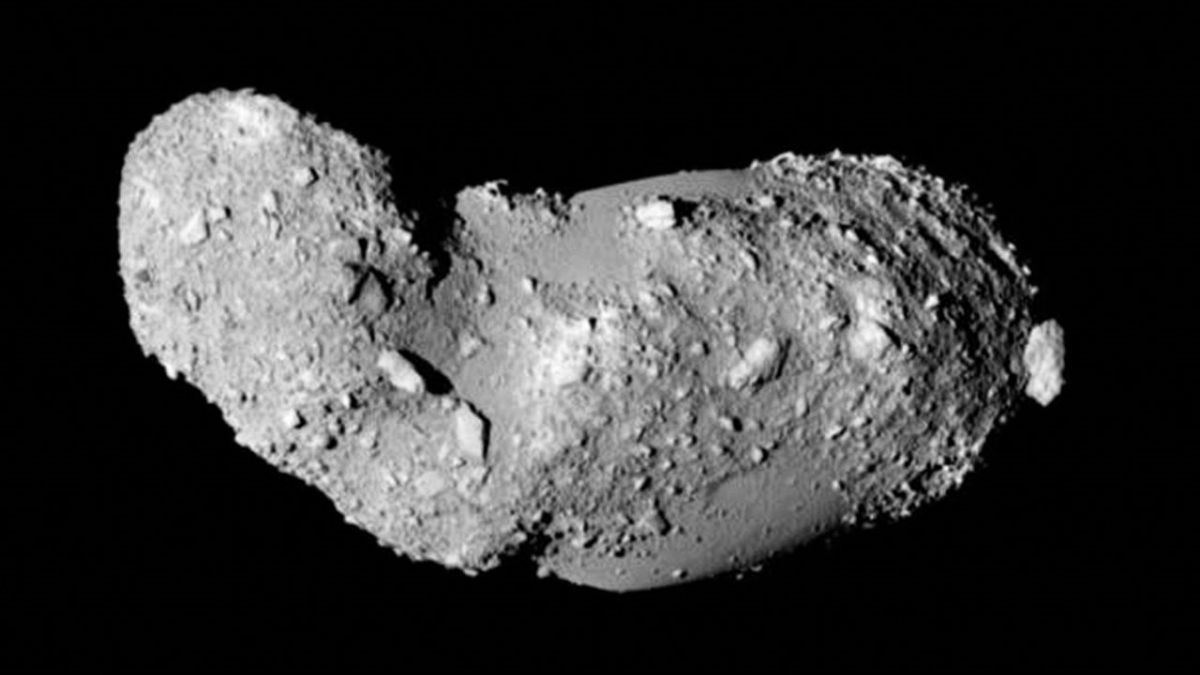A diamond is forever? Tell that to a rubble-pile asteroid. The asteroid Itokawa is a pile of rocky debris 1,640 feet (500 meters) long. Some call it peanut-shaped; Others say it resembles a sea otter, complete with a head, neck and body. Whatever Itokawa may look like, new research suggests that it has remained pristinely intact — despite incessant asteroid bombardment in the inner solar system — since it formed more than 4.2 billion years ago. The finding may be crucial for any future mission designed to protect Earth from…
Read MoreMonth: January 2023
China’s Yutu 2 rover still going strong after 4 years on the moon’s far side
China’s Yutu 2 rover is still operating after four years on the moon and has returned new images from the lunar far side. Yutu 2 is part of the historic Chang’e 4 mission, which made the first-ever soft landing on the far side of the moon in January 2019. The rover woke up this past Jan. 15 to start its 51st lunar day, according to an update (opens in new tab) from the Chinese lunar exploration project’s (CLEP) social media account. (One lunar day lasts about 29.5 Earth days.) There…
Read MoreNASA Awards Innovations, Partnership Support Services Agreements
NASA has selected six companies to provide early-stage innovations and partnership support services. The services will be provided across multiple NASA centers. The place of performance will be specified in each specific call, with much of the work being performed virtually.
Read MorePresident Reagan Calls for Space Station
On January 25, 1984, President Ronald Reagan used his State of the Union address to call for NASA to build a permanent manned space station.
Read MoreHunga Tonga eruption likely to make next year’s ozone hole larger
The Hunga Tonga volcanic eruption that stunned the world last January injected so much water into the stratosphere that it will likely make the ozone hole larger in the coming years, scientists believe. According to reports, the powerful eruption, which was seen from space and detectable by all sorts of sensors around the globe, increased the amount of water in the stratosphere by 10%. The stratosphere is the second-lowest layer of Earth’s atmosphere and is where the ozone layer, which protects the planet from harmful ultraviolet radiation, resides. Now, that…
Read MoreRocket Lab launches 1st Electron booster from US soil in twilight liftoff
WALLOPS ISLAND, Va. — The small satellite launch company Rocket Lab aced its debut liftoff from American soil on Tuesday (Jan. 24), paving the way for potential monthly flights from the U.S. East Coast. A Rocket Lab Electron booster launched from NASA’s Wallops Flight Facility here with three commercial radio frequency satellites for customer HawkEye 360 on board. Liftoff occurred at 6 p.m. EST (2300 GMT), about 45 minutes after sunset. The rocket lit up the twilight sky over Virginia’s Eastern Shore with a rumbling roar, soaring over the stars…
Read MoreSpaceX’s 1st orbital Starship looks supercool in these fueling test photos
SpaceX fueled up a fully stacked Starship vehicle for the first time ever on Monday (Jan. 23), and dramatic photos preserve the process for posterity. The 395-foot-tall (120 meters) Starship is an icy white in the new photos, which SpaceX released via Twitter (opens in new tab) on Tuesday (Jan. 24). That’s a dramatic color shift for the silvery Starship, brought on by the loading of more than 10 million pounds (450,000 kilograms) of supercold liquid oxygen and liquid methane propellant into the stainless-steel vehicle’s tanks. Video: SpaceX ignites multiple…
Read MorePublic Affairs Officer Tiffany Fairley
“My big takeaway is: it’s okay to take chances. Sometimes we step in our own way and we need to accept help.” — Tiffany Fairley, Public Affairs Officer, Artemis Team Lead, NASA’s Kennedy Space Center
Read MoreNASA, DARPA Will Test Nuclear Engine for Future Mars Missions
NASA and the Defense Advanced Research Projects Agency (DARPA) announced Tuesday a collaboration to demonstrate a nuclear thermal rocket engine in space, an enabling capability for NASA crewed missions to Mars.
Read MoreAstronaut Nicole Mann Makes Her First Spacewalk
Astronaut Nicole Mann is pictured during her first spacewalk installing a modification kit on the International Space Station’s starboard truss structure.
Read More